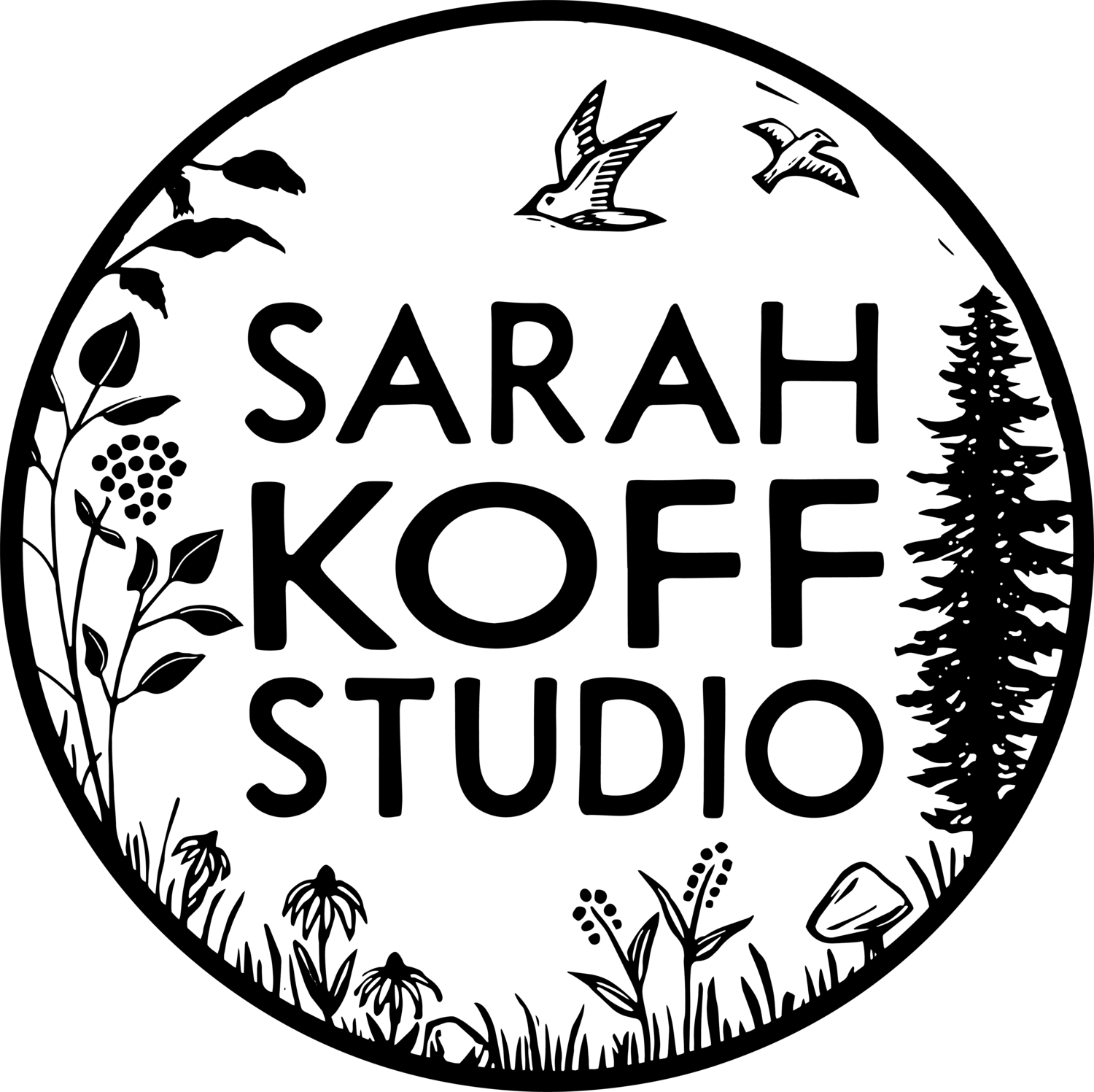about
I am a printmaker, gardener, and environmentalist. I create my block prints in the woods of New Hampshire to tell nature’s stories. Stories from my own backyard, like the slow creep of the hemlock woolly adelgid, to such global hotspots as the coral reefs. But mostly I stick to my own backyard, because that is where I first discovered my deep passion for the natural world — that passion that has driven my career and now motivates me to make.
A former environmental educator with a masters’ degree in ecological design, I have always been intrigued by the connection between humans and the natural world. As I have grown, so too has my aspiration to inspire people to become as invested in protecting the natural world as I am. And from my woodcut studio, I strive to do just that, from telling stories with each print, to creating hand-crafted reusable goods with minimal waste to help lower our environmental impact, to giving a percentage of sales to hard-working conservation/community organizations.
Tell stories, lower the impact, give back.
When I’m not carving away, my favorite activities involve getting my hands dirty in the garden, hiking new and old trails, exploring the rocky seacoast, and cooking and eating local food.
I share my art and stories on social media so if you’d like to hear more, follow along! If you have any questions, feel free to contact me.
my process
Every block print starts with a sketch. I transfer the sketch (in reverse) to a block of either wood or linoleum, and carve it out using sharp carving tools. Once the block is carved, I roll on a layer of ink, lay the paper on top and run it all through my press. If the print will be needing additional colors, I either carve more of the block before adding a separate color, or carve a new block for each additional color.
Every print that comes from my studio is hand-printed using these traditional block printing techniques.
Supporting local community and environment is not only a guideline for subject matter but also technique. I use nontoxic methods of printmaking, like vegetable oil-based inks that wash out with biodegradable soap and water. I purchase material from locally owned businesses whenever possible, and use compostable plastic sleeves and recyclable cardboard to transport my work.



